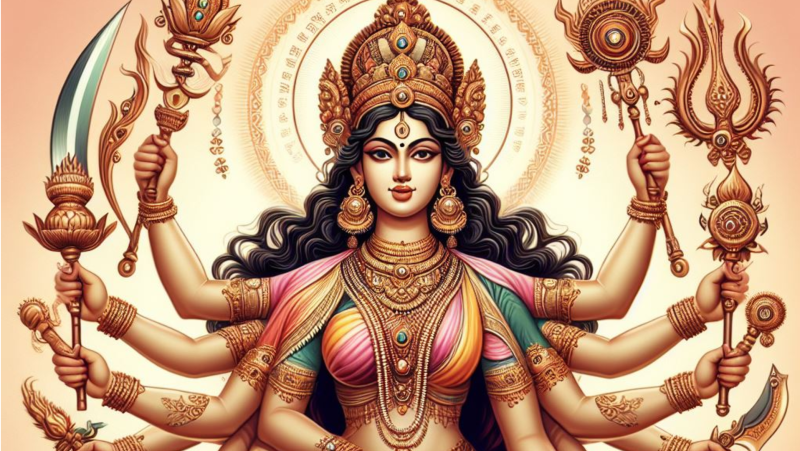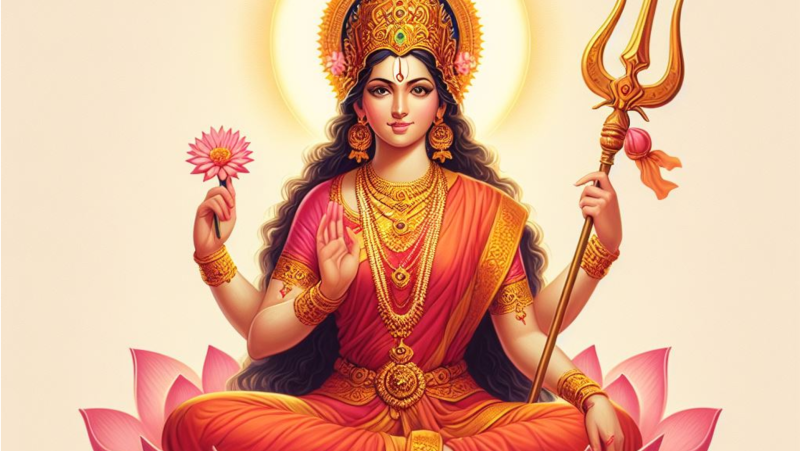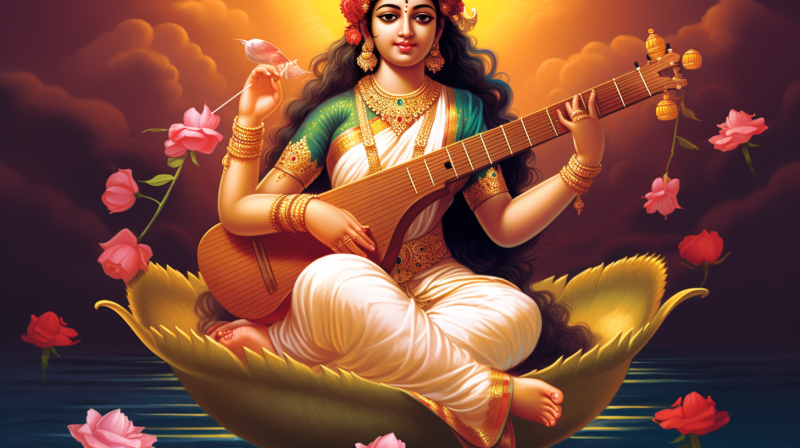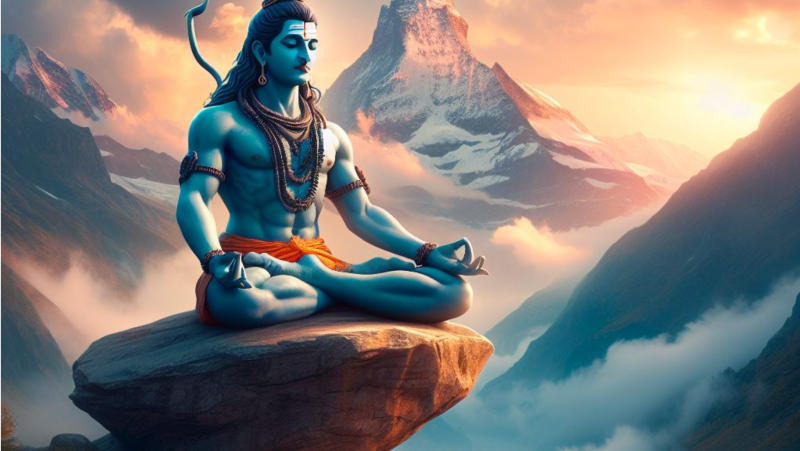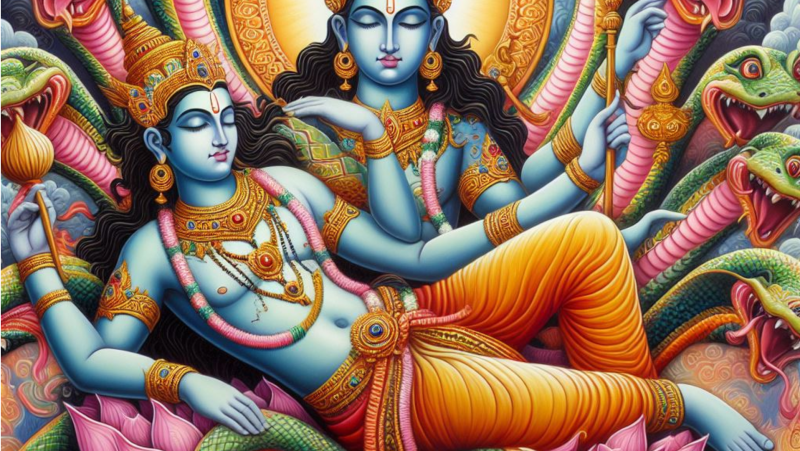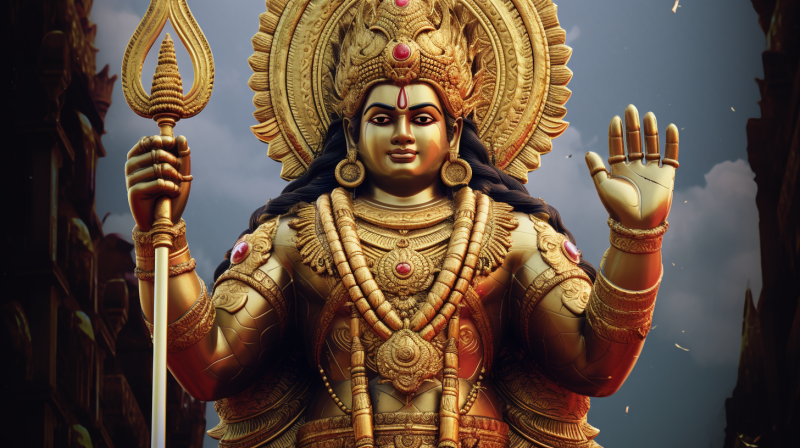
Lord Murugan, also known as Kartikeya, Skanda, Subramanya, or Shanmukha, is a significant deity in Hinduism, particularly in South India. He is considered the god of war, victory, wisdom, and spiritual growth. Here's an overview covering various aspects of Lord Murugan:
About Birth and Family of Lord Murugan
1. Birth of Lord Murugan: According to the Skanda Purana and other sacred texts, the birth of Murugan is attributed to a divine purpose. Here's a commonly accepted version of his birth:
• Origin: Murugan is the son of Lord Shiva, the supreme deity known as the destroyer, and Goddess Parvati, the divine mother and Shakti (feminine energy).
• Creation: The demon Tarakasura had received a boon that only a son of Shiva could vanquish him. However, due to Shiva's deep meditation and asceticism, he was not inclined towards marital life. To create a son capable of defeating Tarakasura, the gods approached Agni (the god of fire) to carry the seed of Shiva to Ganges River, where it transformed into six babies.
• Discovery and Consolidation: The six babies were discovered by the six Krittika stars (Pleiades) and were nurtured by Goddess Parvati. Eventually, they combined into one radiant being with six faces, known as Kartikeya or Murugan.
2. Family of Lord Murugan:
• Parents: Murugan is the son of Lord Shiva and Goddess Parvati. Shiva represents the ascetic and transcendental aspect, while Parvati symbolizes fertility, love, and devotion.
• Sibling: Lord Ganesha, the elephant-headed deity, is the brother of Murugan. Their relationship and interactions are detailed in various Hindu scriptures.
3. Significance of Murugan's Birth:
• Murugan's birth holds significance in the cosmic struggle between good and evil. He was created to vanquish the demon Tarakasura and restore balance in the universe.
• His upbringing and subsequent victory over Tarakasura serve as an allegory for the triumph of righteousness over evil and the overcoming of inner battles.
4. Association with War and Wisdom:
• Lord Murugan is often depicted as a youthful warrior riding a peacock, holding a spear (vel) symbolizing wisdom and a weapon against ignorance.
• He represents valor, courage, and the pursuit of spiritual knowledge, guiding devotees in their battles against inner demons and ignorance.
Lord Murugan's birth story and family dynamics illustrate important mythological aspects in Hinduism, emphasizing the divine purpose behind his creation and his role in upholding righteousness and spiritual wisdom.
About Iconography of Lord Murugan
Lord Murugan, has distinct iconography that symbolizes his attributes, powers, and divine significance. Here's a detailed look at the iconography associated with Lord Murugan:
1. Six Faces and Twelve Arms:
• Lord Murugan is often depicted with six faces, representing his divine connection to the six Krittika stars (Pleiades constellation). Each face represents a direction (north, south, east, west, up, and down).
• He is depicted with twelve arms, each holding different weapons or symbolic items.
2. Spear (Vel):
• The spear, known as Vel, is one of Murugan's primary attributes. It was given to him by Goddess Parvati to vanquish the demon Tarakasura.
• Vel symbolizes divine knowledge, wisdom, and the power to destroy ignorance and evil forces.
3. Peacock Mount:
• Murugan's mount, vehicle, or vahana is a peacock, known for its beauty and grace.
• The peacock symbolizes grace, majesty, and the ability to subdue pride and ego.
4. Symbols in His Hands:
• Lord Murugan's twelve arms hold various objects and weapons:
- Spear (Vel): Represents divine knowledge and the power to defeat evil.
- Staff or Lance: Symbolizes protection and authority.
- Bow and Arrow: Indicate his prowess as a warrior and his ability to aim accurately.
- Conch Shell: Represents the sound of creation and divine victory.
- Lotus: Symbolizes purity and enlightenment.
- Prayer Beads (Rosary): Signify meditation and spiritual discipline.
- Veena (Musical Instrument): Represents creativity, arts, and culture.
- Sword: Symbolizes valor, strength, and the ability to cut through ignorance.
- Chakram (Discus): Represents the cyclical nature of time and creation.
5. Attire and Ornamentation:
• Murugan is often adorned with intricate jewelry, including necklaces, armlets, and earrings.
• He is depicted wearing a sacred thread (yajnopavita) across his torso, symbolizing initiation into spiritual knowledge.
6. Serene Appearance:
• Murugan is often portrayed with a serene and youthful appearance, radiating tranquility and divine grace.
7. Other Depictions:
• In some depictions, Lord Murugan is also shown with only one face and two arms, carrying the Vel and riding the peacock.
• Temples dedicated to Lord Murugan may portray various forms of the deity, each carrying specific attributes and symbolisms.
The iconography of Lord Murugan represents his multifaceted nature as a divine warrior, wisdom bearer, and protector. Each aspect of his depiction carries symbolic significance, reflecting his role in guiding devotees on their spiritual journey and helping them overcome obstacles.
About Worship and Festivals of Lord Murugan
Worship and festivals dedicated to Lord Murugan, are celebrated with great enthusiasm, particularly in South India. Devotees venerate Murugan for his valor, wisdom, and guidance in overcoming obstacles. Here's detailed information about the worship practices and festivals associated with Lord Murugan:
1. Worship Practices:
A. Temple Worship:
• Temples dedicated to Lord Murugan, especially the Aru Padai Veedu (Six Abodes), are revered pilgrimage sites in South India.
• Devotees visit these temples to offer prayers, perform rituals, and seek blessings from Lord Murugan.
B. Poojas and Offerings:
• Special prayers and rituals are conducted in temples and homes, especially on Tuesdays and during auspicious occasions associated with Murugan.
• Devotees offer flowers, fruits, coconuts, milk, honey, and sweets like milk porridge (paal kudam) as part of the worship.
C. Kavadi Attam:
• Kavadi Attam is a popular form of devotion where devotees carry kavadis (ornate structures) on their shoulders as a form of penance and gratitude towards Lord Murugan.
• They undergo rituals like fasting and purifying practices before participating in the Kavadi procession.
2. Festivals Dedicated to Lord Murugan:
A. Thaipusam:
• Thaipusam is a significant festival celebrated by Murugan devotees, particularly in Tamil Nadu, Malaysia, and Singapore.
• Devotees engage in acts of penance, such as carrying kavadis, piercing the skin with Vel skewers, and performing various vows to express devotion and seek Murugan's blessings.
• The festival commemorates the occasion when Parvati gave Murugan the Vel to defeat the demon Tarakasura.
B. Skanda Sashti:
• Skanda Sashti is a six-day festival dedicated to Lord Murugan, celebrated in the Tamil month of Aippasi (October-November).
• The festival commemorates the victory of Murugan over the demon Surapadman.
• Devotees observe fasts, recite hymns and scriptures, and participate in processions, culminating in special poojas on the sixth day.
C. Panguni Uthiram:
• Panguni Uthiram is another significant festival celebrated in the Tamil month of Panguni (March-April).
• It marks the divine marriage of Murugan (Subramanya) and Deivanai.
• Devotees participate in processions, temple festivities, and rituals to honor the divine union.
These festivals and worship practices dedicated to Lord Murugan are characterized by devotion, penance, and celebration. They provide devotees with opportunities to express their faith, seek blessings, and experience spiritual growth under Murugan's guidance.
About Associations and Significance of Lord Murugan
Lord Murugan, holds significant associations and significance in Hindu mythology and spiritual practices. Here's detailed information about the associations and significance of Lord Murugan:
1. God of War and Victory:
• Lord Murugan is revered as the god of war, valor, and victory. He embodies courage, strength, and leadership, guiding devotees to overcome adversities and challenges.
• His spear (Vel) represents divine knowledge and the power to destroy obstacles and evil forces.
2. Symbol of Wisdom and Intelligence:
• Murugan is also associated with wisdom, intelligence, and spiritual knowledge. His six faces symbolize divine knowledge, granting clarity in understanding cosmic truths.
• Devotees seek his blessings for intellect, education, and success in endeavors.
3. Inner Spiritual Growth:
• Lord Murugan is considered a spiritual guide who helps individuals conquer their inner demons, ego, and ignorance.
• He aids devotees in their spiritual journey, inspiring them to pursue righteousness and self-realization.
4. Protector and Guardian:
• Murugan is venerated as a protector and guardian. Devotees seek his blessings for protection from negative influences, enemies, and difficulties.
• He offers divine assistance and safeguards homes, families, and devotees.
5. Youthful Energy and Vitality:
• Murugan represents youthful energy, vitality, and enthusiasm. He inspires individuals with vigor, dynamism, and dedication to achieve their goals.
• His peacock mount symbolizes beauty, grace, and control over desires and ego.
6. Family and Divine Relations:
• Murugan is the son of Lord Shiva and Goddess Parvati. He shares a strong bond with his family, particularly with his brother Lord Ganesha.
• His divine marriages, such as with Deivanai and Valli, symbolize union with the divine and spiritual harmony.
7. Symbol of Unity and Harmony:
• Lord Murugan's story and worship transcend regional boundaries, emphasizing unity and inclusivity among devotees from diverse backgrounds.
• His universal appeal unites people in devotion and spiritual practices.
8. Festivals and Devotion:
• Festivals like Thaipusam, Skanda Sashti, and Panguni Uthiram celebrate Lord Murugan's victories, divine unions, and spiritual significance.
• Devotees express their devotion through rituals, processions, fasting, and prayers, seeking Murugan's blessings for various aspects of life.
Lord Murugan's multifaceted attributes and significance make him an embodiment of courage, wisdom, and spiritual guidance in Hindu mythology. His worship and associations symbolize the pursuit of righteousness, inner strength, and the triumph of good over evil.
About Regions of Worship of Lord Murugan
Lord Murugan, revered as a prominent deity in Hinduism, is worshiped across various regions, with specific areas in South India being particularly significant for his devotees. Here's detailed information about the regions where Lord Murugan is extensively worshipped:
1. Tamil Nadu:
• Aru Padai Veedu Temples: Tamil Nadu houses the Aru Padai Veedu (Six Abodes) dedicated to Lord Murugan. These temples are:
- Thiruchendur (the place of victory)
- Palani (the place where he settled after an argument with his family)
- Swamimalai (where he taught spiritual wisdom to his father, Lord Shiva)
- Thirupparamkunram (where he married Deivanai)
- Pazhamudircholai (where he met his consort Valli)
- Thiruthani (where he married Valli)
• Festivals: Thaipusam, observed with grandeur in Tamil Nadu, is celebrated with processions, rituals, and penance by devotees.
2. Kerala:
• Palani Hills and Sabarimala: The Palani Hills are known for the Palani Murugan Temple, a sacred pilgrimage site. Sabarimala, although primarily dedicated to Lord Ayyappa, also reveres Lord Murugan as a significant deity.
3. Karnataka:
• Kukke Subramanya Temple: Located in Karnataka, this temple is dedicated to Lord Subramanya and is a popular pilgrimage destination for Murugan devotees.
4. Sri Lanka:
• Kataragama Temple: The Kataragama Temple in Sri Lanka is dedicated to Lord Murugan, and it attracts devotees from various cultural backgrounds.
5. Malaysia and Singapore:
• Batu Caves (Malaysia): The Batu Caves near Kuala Lumpur feature a massive statue of Lord Murugan at its entrance and is a renowned site for Murugan worship.
• Thaipusam Celebrations: Malaysia and Singapore witness vibrant Thaipusam celebrations, drawing devotees from different communities.
6. Other Global Regions:
• Lord Murugan is worshipped by Tamil diaspora communities worldwide, particularly in countries with significant Tamil populations like the United Kingdom, Canada, Australia, and the United States.
These regions are significant hubs of worship for Lord Murugan, hosting temples, festivals, and traditions dedicated to his reverence. The Aru Padai Veedu temples in Tamil Nadu, in particular, play a central role in Murugan's worship, drawing devotees seeking his blessings for various aspects of life, spiritual growth, and well-being.
About Philosophical Significance of Lord Murugan
Lord Murugan, holds deep philosophical significance in Hinduism. His symbolism and stories embody profound philosophical teachings that offer guidance and insights into various aspects of life. Here's a detailed look at the philosophical significance of Lord Murugan:
1. Inner Spiritual Growth:
• Murugan represents the journey of inner spiritual growth and self-realization. His six faces symbolize the pursuit of knowledge in all six directions, indicating the quest for cosmic wisdom and self-awareness.
2. Conquest of Inner Demons:
• Murugan's battles against demons, particularly his victory over Tarakasura and Surapadman, symbolize the conquest of inner demons such as ego, ignorance, desires, and negative tendencies.
• Devotees seek Murugan's blessings to overcome these inner conflicts and attain spiritual purity.
3. Wisdom and Discernment:
• The Vel (spear) carried by Murugan represents divine wisdom and the power to discern between truth and falsehood.
• His teachings emphasize the importance of discernment, knowledge, and the ability to distinguish between right and wrong.
4. Unity of Dualities:
• Murugan is often depicted as a deity who unites various dualities and contradictions. For instance, his six faces symbolize the integration and harmonization of diverse energies.
• He represents the balance between divine consciousness (Shiva) and cosmic energy (Shakti), embodying their unified essence.
5. Pursuit of Righteousness:
• Murugan's adherence to dharma (righteousness) and his commitment to fulfilling divine duties signify the importance of leading a righteous life and upholding moral values.
6. Overcoming Obstacles:
• Murugan's role as the remover of obstacles (Vighnaharta) signifies the ability to overcome hurdles in the spiritual path and in life's pursuits.
• Devotees seek his blessings to navigate challenges and impediments with courage and determination.
7. Integration of Spirituality and Material Life:
• Murugan's worship demonstrates the integration of spirituality with worldly life. His blessings are sought for both material prosperity and spiritual evolution.
8. Symbol of Divine Union:
• Murugan's divine marriages with Deivanai and Valli symbolize the union of the individual soul (jivatma) with the divine consciousness (paramatma), signifying spiritual union and harmony.
The philosophical significance of Lord Murugan encapsulates a holistic approach to life, emphasizing the pursuit of knowledge, inner transformation, righteousness, and the harmonization of dualities. His stories and teachings inspire seekers on the path of spiritual evolution, urging them to conquer inner challenges and attain higher consciousness.
You may also like …
Are You The Proud Hindu?
The Trimurti
Create an account to join us and start taking part in conversations.
SIGNIN